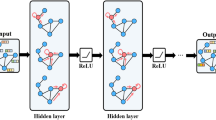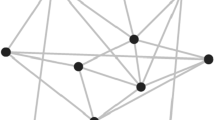Abstract
The quality of the finite element mesh has a considerable effect on the efficiency and accuracy of computational fluid dynamics (CFD) simulations. To ensure the generated mesh is of good quality, many quality metrics have been proposed to assess the generated mesh, such as aspect ratio, skewness, Jacobian ratio, etc. Such metrics, however, are primarily employed to detect locally distorted mesh elements. There are still no justifiable thresholds for determining whether the generated mesh is of sufficient quality for simulation. Consequently, it is necessary for the professionals to assess the generated mesh afterward which is time-consuming and labor-intensive work. With the ability to learn features on the graph, the graph neural networks have been successfully applied in many application areas to reduce human-computer interaction. In this paper, we define mesh quality evaluation as a graph classification problem. We first propose a novel and sparse-implemented algorithm to transform the mesh data into graph data. We then introduce a deep graph neural network, GMeshNet, to evaluate the mesh quality. Experimental results on the NACA-Market and NACA6510 mesh datasets demonstrate the effectiveness of our proposed network.





Similar content being viewed by others
References
Spalart P, Venkatakrishnan V (2016) On the role and challenges of CFD in the aerospace industry. Aeronaut J 120(1223):209–232. https://doi.org/10.1017/aer.2015.10
Watanabe N, Miyamoto S, Kuba M et al (2003) The CFD application for efficient designing in the automotive engineering. SAE Trans 1476–1482. https://doi.org/10.4271/2003-01-1335
Das S, Paul S, Doloi B (2019) Application of cfd and vapor bubble dynamics for an efficient electro-thermal simulation of edm: an integrated approach. Int J Adv Manuf Technol 102. https://doi.org/10.1007/s00170-018-3144-x
Wan S, Ang Y, Sato T et al (2013) Process modeling and cfd simulation of two-way abrasive flow machining. Int J Adv Manuf Technol 71:1077–1086. https://doi.org/10.1007/s00170-013-5550-4
Ho-Le K (1988) Finite element mesh generation methods: a review and classification. Comput Aided Des 20(1):27–38. https://doi.org/10.1016/0010-4485(88)90138-8
Gammon M (2018) A review of common geometry issues affecting mesh generation. In: 2018 AIAA Aerospace Sciences Meeting, p 1402. https://doi.org/10.2514/6.2018-1402
Li H et al (2012) Finite element mesh generation and decision criteria of mesh quality. China Mech Eng 23(3):368
Knupp P (2007) Remarks on mesh quality. Tech. rep., Sandia National Lab.(SNL-NM), Albuquerque, NM (United States)
Guo Y, Liu Y, Oerlemans A et al (2016) Deep learning for visual understanding: a review. Neurocomputing 187:27–48. https://doi.org/10.1016/j.neucom.2015.09.116
Wu Z, Pan S, Chen F et al (2020) A comprehensive survey on graph neural networks. IEEE Trans Neural Netw Learn Syst 32(1):4–24. https://doi.org/10.1109/TNNLS.2020.2978386
Chen X, Liu J, Pang Y et al (2020) Developing a new mesh quality evaluation method based on convolutional neural network. Eng Appl Comput Fluid Mech 14(1):391–400. https://doi.org/10.1080/19942060.2020.1720820
Sarrate J, Palau J, Huerta A (2003) Numerical representation of the quality measures of triangles and triangular meshes. Commun Numer Methods Eng 19(7):551–561. https://doi.org/10.1002/cnm.585
Nie C, Liu J, Sun S (2003) Study on quality measures for tetrahedral mesh. Chin J Comput Mech 20(5):579–582
Kwok W, Chen Z (2000) A simple and effective mesh quality metric for hexahedral and wedge elements. In: IMR, pp 325–333
Knupp PM (2001) Algebraic mesh quality metrics. SIAM J Sci Comput 23(1):193–218. https://doi.org/10.1137/S1064827500371499
Knupp PM (2003) Algebraic mesh quality metrics for unstructured initial meshes. Finite Elem Anal Des 39(3):217–241. https://doi.org/10.1016/S0168-874X(02)00070-7
Chauhan VK, Dahiya K, Sharma A (2019) Problem formulations and solvers in linear SVM: a review. Artif Intell Rev 52(2):803–855. https://doi.org/10.1007/s10462-018-9614-6
Chetouani A (2017) A 3D mesh quality metric based on features fusion. Electron Imaging 2017(20):4–8. https://doi.org/10.2352/ISSN.2470-1173.2017.20.3DIPM-001
Sprave J, Drescher C (2021) Evaluating the quality of finite element meshes with machine learning. arXiv:2107.10507
Krizhevsky A, Sutskever I, Hinton GE (2012) Imagenet classification with deep convolutional neural networks. Adv Neural Inf Process Syst 25:1097–1105. https://doi.org/10.1145/3065386
Wang J, Zheng T, Lei P et al (2019) A hierarchical convolution neural network CNN-based ship target detection method in spaceborne sar imagery. Remote Sens 11(6):620. https://doi.org/10.3390/rs11060620
Jalilian E, Uhl A, Kwitt R (2017) Domain adaptation for cnn based iris segmentation. In: 2017 International Conference of the Biometrics Special Interest Group (BIOSIG), pp 1–6. https://doi.org/10.23919/BIOSIG.2017.8053502
Chen X, Liu J, Gong C et al (2021) MVE-Net: An automatic 3-d structured mesh validity evaluation framework using deep neural networks. Comput Aided Des 141(103):104. https://doi.org/10.1016/j.cad.2021.103104
Yu B, Yin H, Zhu Z (2018) Spatio-temporal graph convolutional networks: a deep learning framework for traffic forecasting. In: Proceedings of the 27th International Joint Conference on Artificial Intelligence, pp 3634–3640. https://doi.org/10.24963/ijcai.2018/505
Monti F, Bronstein MM, Bresson X (2017) Geometric matrix completion with recurrent multi-graph neural networks. In: Proceedings of the 31st International Conference on Neural Information Processing Systems, pp 3700–3710
Gilmer J, Schoenholz SS, Riley PF et al (2017) Neural message passing for quantum chemistry. In: International conference on machine learning, PMLR, pp 1263–1272
Qiu J, Tang J, Ma H et al (2018) Deepinf: Social influence prediction with deep learning. In: Proceedings of the 24th ACM SIGKDD International Conference on Knowledge Discovery & Data Mining, pp 2110–2119. https://doi.org/10.1145/3219819.3220077
Kipf TN, Welling M (2016) Semi-supervised classification with graph convolutional networks. https://doi.org/10.1145/3459637.3482477. arXiv preprint arXiv:1609.02907
Veličković P, Cucurull G, Casanova A et al (2017) Graph attention networks. arXiv preprint arXiv:1710.10903
Ying R, You J, Morris C et al (2018) Hierarchical graph representation learning with differentiable pooling. In: Proceedings of the 32nd International Conference on Neural Information Processing Systems, pp 4805–4815
Cangea C, Veličković P, Jovanović N, et al (2018) Towards sparse hierarchical graph classifiers. arXiv preprint arXiv:1811.01287
Li Q, Han Z, Wu XM (2018) Deeper insights into graph convolutional networks for semi-supervised learning. In: Thirty-Second AAAI conference on artificial intelligence
Li G, Muller M, Thabet A, et al (2019) DeepGCNs: Can GCNs go as deep as CNNs? In: Proceedings of the IEEE/CVF International Conference on Computer Vision, pp 9267–9276, https://doi.org/10.1109/ICCV.2019.00936
Li G, Xiong C, Thabet A et al (2020) Deepergcn: All you need to train deeper gcns. arXiv:2006.07739
Ba JL, Kiros JR, Hinton GE (2016) Layer normalization. arXiv:1607.06450
Lee J, Lee I, Kang J (2019) Self-attention graph pooling. In: International Conference on Machine Learning, PMLR, pp 3734–3743
Xu K, Li C, Tian Y et al (2018) Representation learning on graphs with jumping knowledge networks. In: International Conference on Machine Learning, PMLR, pp 5453–5462
Ioffe S, Szegedy C (2015) Batch normalization: Accelerating deep network training by reducing internal covariate shift. In: Proceedings of the 32nd International Conference on International Conference on Machine Learning - Volume 37, ICML’15, pp 448–456
Reddi SJ, Kale S, Kumar S (2019) On the convergence of adam and beyond. arXiv:1904.09237
Hamilton WL, Ying R, Leskovec J (2017) Inductive representation learning on large graphs. In: Proceedings of the 31st International Conference on Neural Information Processing Systems. Curran Associates Inc., Red Hook, NY, USA, NIPS’17, pp 1025-1035
Funding
This research work was supported in part by the National Numerical Windtunnel project (NNW2019ZT5-A10) and National Key Research and Development Program of China.
Author information
Authors and Affiliations
Contributions
All authors contributed to the study conception and design. Data collection and analysis, network design, experiment and result analysis were performed by ZW and XC. The first draft of the manuscript was written by ZW and all authors commented on previous versions of the manuscript. All authors read and approved the final manuscript.
Corresponding author
Ethics declarations
Conflict of interest
The authors have no relevant financial or non-financial interests to disclose.
Additional information
Publisher's Note
Springer Nature remains neutral with regard to jurisdictional claims in published maps and institutional affiliations.
Rights and permissions
Springer Nature or its licensor holds exclusive rights to this article under a publishing agreement with the author(s) or other rightsholder(s); author self-archiving of the accepted manuscript version of this article is solely governed by the terms of such publishing agreement and applicable law.
About this article
Cite this article
Wang, Z., Chen, X., Li, T. et al. Evaluating mesh quality with graph neural networks. Engineering with Computers 38, 4663–4673 (2022). https://doi.org/10.1007/s00366-022-01720-8
Received:
Accepted:
Published:
Issue Date:
DOI: https://doi.org/10.1007/s00366-022-01720-8




